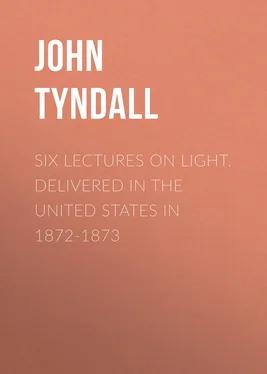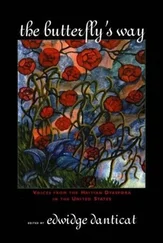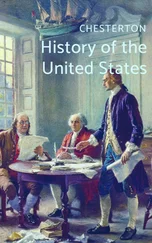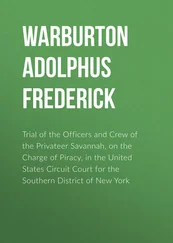John Tyndall - Six Lectures on Light. Delivered In The United States In 1872-1873
Здесь есть возможность читать онлайн «John Tyndall - Six Lectures on Light. Delivered In The United States In 1872-1873» — ознакомительный отрывок электронной книги совершенно бесплатно, а после прочтения отрывка купить полную версию. В некоторых случаях можно слушать аудио, скачать через торрент в формате fb2 и присутствует краткое содержание. Жанр: foreign_antique, Физика, foreign_edu, на английском языке. Описание произведения, (предисловие) а так же отзывы посетителей доступны на портале библиотеки ЛибКат.
- Название:Six Lectures on Light. Delivered In The United States In 1872-1873
- Автор:
- Жанр:
- Год:неизвестен
- ISBN:нет данных
- Рейтинг книги:5 / 5. Голосов: 1
-
Избранное:Добавить в избранное
- Отзывы:
-
Ваша оценка:
- 100
- 1
- 2
- 3
- 4
- 5
Six Lectures on Light. Delivered In The United States In 1872-1873: краткое содержание, описание и аннотация
Предлагаем к чтению аннотацию, описание, краткое содержание или предисловие (зависит от того, что написал сам автор книги «Six Lectures on Light. Delivered In The United States In 1872-1873»). Если вы не нашли необходимую информацию о книге — напишите в комментариях, мы постараемся отыскать её.
Six Lectures on Light. Delivered In The United States In 1872-1873 — читать онлайн ознакомительный отрывок
Ниже представлен текст книги, разбитый по страницам. Система сохранения места последней прочитанной страницы, позволяет с удобством читать онлайн бесплатно книгу «Six Lectures on Light. Delivered In The United States In 1872-1873», без необходимости каждый раз заново искать на чём Вы остановились. Поставьте закладку, и сможете в любой момент перейти на страницу, на которой закончили чтение.
Интервал:
Закладка:
§ 5. Analogies of Sound and Light
Thomas Young's fundamental discovery in optics was that the principle of Interference was applicable to light. Long prior to his time an Italian philosopher, Grimaldi, had stated that under certain circumstances two thin beams of light, each of which, acting singly, produced a luminous spot upon a white wall, when caused to act together, partially quenched each other and darkened the spot. This was a statement of fundamental significance, but it required the discoveries and the genius of Young to give it meaning. How he did so will gradually become clear to you. You know that air is compressible: that by pressure it can be rendered more dense, and that by dilatation it can be rendered more rare. Properly agitated, a tuning-fork now sounds in a manner audible to you all, and most of you know that the air through which the sound is passing is parcelled out into spaces in which the air is condensed, followed by other spaces in which the air is rarefied. These condensations and rarefactions constitute what we call waves of sound. You can imagine the air of a room traversed by a series of such waves, and you can imagine a second series sent through the same air, and so related to the first that condensation coincides with condensation and rarefaction with rarefaction. The consequence of this coincidence would be a louder sound than that produced by either system of waves taken singly. But you can also imagine a state of things where the condensations of the one system fall upon the rarefactions of the other system. In this case (other things being equal) the two systems would completely neutralize each other. Each of them taken singly produces sound; both of them taken together produce no sound. Thus by adding sound to sound we produce silence, as Grimaldi, in his experiment, produced darkness by adding light to light.
Through his investigations on sound, which were fruitful and profound, Young approached the study of light. He put meaning into the observation of Grimaldi, and immensely extended it. With splendid success he applied the undulatory theory to the explanation of the colours of thin plates, and to those of striated surfaces. He discovered and explained classes of colour which had been previously unnoticed or unknown. On the assumption that light was wave-motion, all his experiments on interference were accounted for; on the assumption that light was flying particles, nothing was explained. In the time of Huyghens and Euler a medium had been assumed for the transmission of the waves of light; but Newton raised the objection that, if light consisted of the waves of such a medium, shadows could not exist. The waves, he contended, would bend round opaque bodies and produce the motion of light behind them, as sound turns a corner, or as waves of water wash round a rock. It was proved that the bending round referred to by Newton actually occurs, but that the inflected waves abolish each other by their mutual interference. Young also discerned a fundamental difference between the waves of light and those of sound. Could you see the air through which sound-waves are passing, you would observe every individual particle of air oscillating to and fro, in the direction of propagation . Could you see the luminiferous ether, you would also find every individual particle making a small excursion to and fro; but here the motion, like that assigned to the water-particles above referred to, would be across the line of propagation. The vibrations of the air are longitudinal
Конец ознакомительного фрагмента.
Текст предоставлен ООО «ЛитРес».
Прочитайте эту книгу целиком, на ЛитРес.
Безопасно оплатить книгу можно банковской картой Visa, MasterCard, Maestro, со счета мобильного телефона, с платежного терминала, в салоне МТС или Связной, через PayPal, WebMoney, Яндекс.Деньги, QIWI Кошелек, бонусными картами или другим удобным Вам способом.
1
Among whom may be especially mentioned the late Sir Edmund Head, Bart., with whom I had many conversations on this subject.
2
At whose hands it gives me pleasure to state I have always experienced honourable and liberal treatment.
3
One of the earliest of these came from Mr. John Amory Lowell of Boston.
4
It will be subsequently shown how this simple apparatus may be employed to determine the 'polarizing angle' of a liquid.
5
From this principle Sir John Herschel deduces in a simple and elegant manner the fundamental law of reflection.—See Familiar Lectures , p. 236.
6
The low dispersive power of water masks, as Helmholtz has remarked, the imperfect achromatism of the eye. With the naked eye I can see a distant blue disk sharply defined, but not a red one. I can also see the lines which mark the upper and lower boundaries of a horizontally refracted spectrum sharp at the blue end, but ill-defined at the red end. Projecting a luminous disk upon a screen, and covering one semicircle of the aperture with a red and the other with a blue or green glass, the difference between the apparent sizes of the two semicircles is in my case, and in numerous other cases, extraordinary. Many persons, however, see the apparent sizes of the two semicircles reversed. If with a spectacle glass I correct the dispersion of the red light over the retina, then the blue ceases to give a sharply defined image. Thus examined, the departure of the eye from achromatism appears very gross indeed.
7
Both in foliage and in flowers there are striking differences of absorption. The copper beech and the green beech, for example, take in different rays. But the very growth of the tree is due to some of the rays thus taken in. Are the chemical rays, then, the same in the copper and the green beech? In two such flowers as the primrose and the violet, where the absorptions, to judge by the colours, are almost complementary, are the chemically active rays the same? The general relation of colour to chemical action is worthy of the application of the method by which Dr. Draper proved so conclusively the chemical potency of the yellow rays of the sun.
8
Young, Helmholtz, and Maxwell reduce all differences of hue to combinations in different proportions of three primary colours. It is demonstrable by experiment that from the red, green, and violet all the other colours of the spectrum may be obtained.
Some years ago Sir Charles Wheatstone drew my attention to a work by Christian Ernst Wünsch, Leipzig 1792, in which the author announces the proposition that there are neither five nor seven, but only three simple colours in white light. Wünsch produced five spectra, with five prisms and five small apertures, and he mixed the colours first in pairs, and afterwards in other ways and proportions. His result is that red is a simple colour incapable of being decomposed; that orange is compounded of intense red and weak green; that yellow is a mixture of intense red and intense green; that green is a simple colour; that blue is compounded of saturated green and saturated violet; that indigo is a mixture of saturated violet and weak green; while violet is a pure simple colour. He also finds that yellow and indigo blue produce white by their mixture. Yellow mixed with bright blue (Hochblau) also produces white, which seems, however, to have a tinge of green, while the pigments of these two colours when mixed always give a more or less beautiful green, Wünsch very emphatically distinguishes the mixture of pigments from that of lights. Speaking of the generation of yellow, he says, 'I say expressly red and green light , because I am speaking about light-colours (Lichtfarben), and not about pigments.' However faulty his theories may be, Wünsch's experiments appear in the main to be precise and conclusive. Nearly ten years subsequently, Young adopted red, green, and violet as the three primary colours, each of them capable of producing three sensations, one of which, however, predominates over the two others. Helmholtz adopts, elucidates, and enriches this notion. ( Popular Lectures , p. 249. The paper of Helmholtz on the mixture of colours, translated by myself, is published in the Philosophical Magazine for 1852. Maxwell's memoir on the Theory of Compound Colours is published in the Philosophical Transactions , vol. 150, p. 67.)
Читать дальшеИнтервал:
Закладка:
Похожие книги на «Six Lectures on Light. Delivered In The United States In 1872-1873»
Представляем Вашему вниманию похожие книги на «Six Lectures on Light. Delivered In The United States In 1872-1873» списком для выбора. Мы отобрали схожую по названию и смыслу литературу в надежде предоставить читателям больше вариантов отыскать новые, интересные, ещё непрочитанные произведения.
Обсуждение, отзывы о книге «Six Lectures on Light. Delivered In The United States In 1872-1873» и просто собственные мнения читателей. Оставьте ваши комментарии, напишите, что Вы думаете о произведении, его смысле или главных героях. Укажите что конкретно понравилось, а что нет, и почему Вы так считаете.












